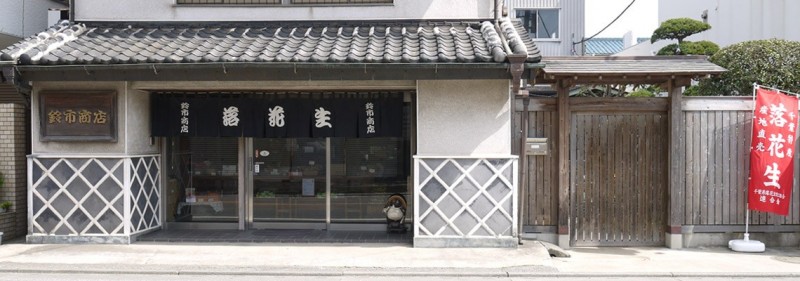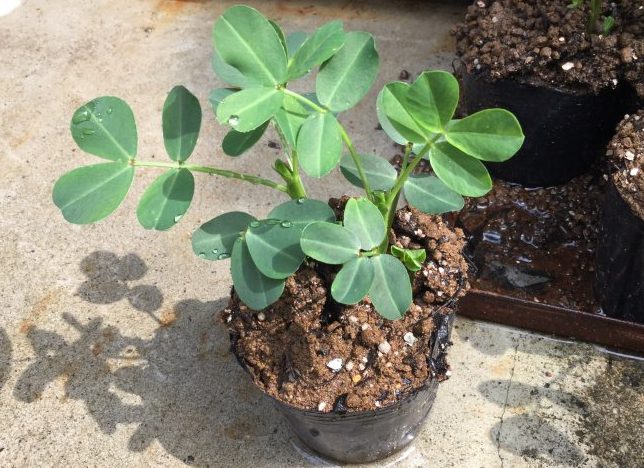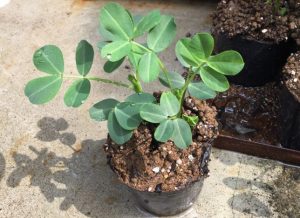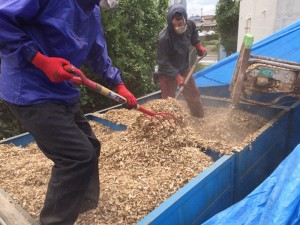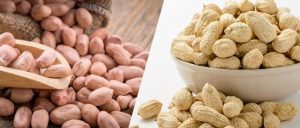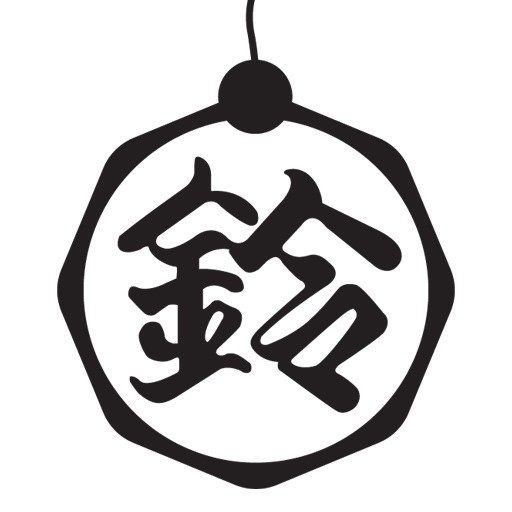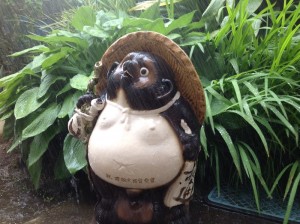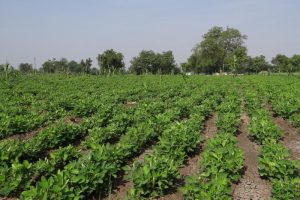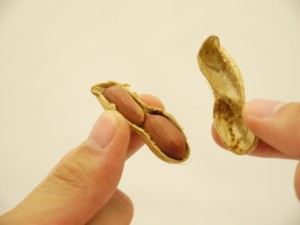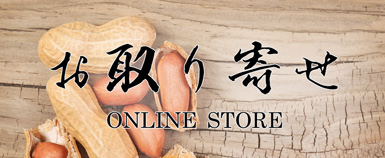Peanut cultivation is fun to see and delicious to eat
Peanut cultivation is a fun plant to watch as the pretty yellow flowers are ornamental and the peanuts change their appearance as the former of the clusters grows like a root and sticks into the soil. After harvesting, they can be eaten with relish, or if you hold off on eating part of them and store them, you can grow them again next year. Growing peanuts is not that difficult, and even beginners can try it easily. Why don’t you try growing peanuts that are fun to look at and delicious to eat, based on the correct cultivation methods?

Ordering peanut seeds
Seeds for growing peanuts can be purchased here.
Manual for growing peanuts
①Field Preparation
About one week before sowing, add fertilizer to the soil. If using a chemical fertilizer, mix 100 g of a 3:10:10 ratio of nitrogen, phosphate, and potash per square meter of field.
Lime is necessary to produce fruit. Mix 60 to 100 grams of slaked lime or limestone with fertilizer per square meter of soil. If mulch is used, use a mulch approximately 90 cm wide. (You can grow without mulch). Make a bed that is 70 cm wide with the middle slightly elevated, lay down the mulch, and then cover both ends with soil to hold it down.
②planting seeds
Sow at intervals of 40 to 50 cm between rows (row to row) and 25 to 30 cm between plants (plant to plant).
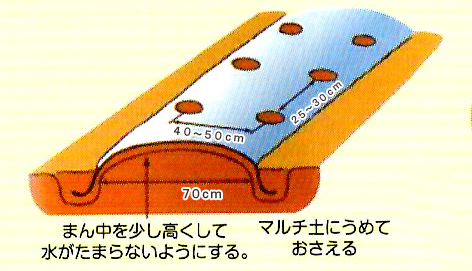
③Number and depth of seeds sown
Sow two seeds in one place. Separate the seeds about 2 cm from each other. The depth should be 3 cm and the seeds should be sown horizontally.
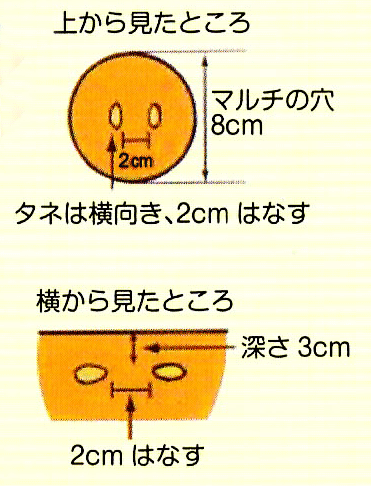
*Peanut seeds are sensitive to moisture. If the soil is moist, do not water.
④contribute soil
About 7 to 10 days after flowering, bring the soil to the base of the plant (this will allow the petiole to penetrate the soil more easily).
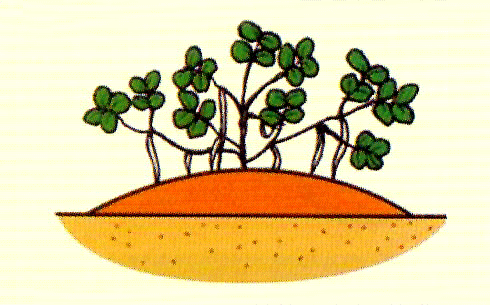
⑤watering (plants)
When the fields are dry in late July to mid-August, water them thoroughly.
⑥harvest
The approximate time of harvest is 75 to 95 days after the flowers begin to bloom, and varies from variety to variety.
| Name of Varieties | How to decide when to harvest (Number of days after the flowers begin to bloom) |
| Chiba Handachi | After 95 days |
| Nakate Yutaka | After 80 days |
⑦dryness
Dry the dug peanuts upside down for about a week to prevent soil from sticking to the pods (ground-drying). After drying on the ground, spread them on newspaper or put them in a mesh bag and hang them in a well-ventilated place to dry slowly.
Let’s grow them in flowerpots!
①Size of pot
Prepare a 24 cm diameter to 30 cm diameter pot.
②Soil Preparation
Add 10-20% humus to field soil or garden soil. For fertilizer, mix 10 grams of chemical fertilizer (3:10:10 nitrogen, phosphate, and potash) and 5 grams of slaked lime or bitter lime per 10 liters of soil.
③How to sow seeds
Sow 2 seeds about 2 cm apart at a depth of 3 cm. Seeds will sprout in 7 to 10 days.
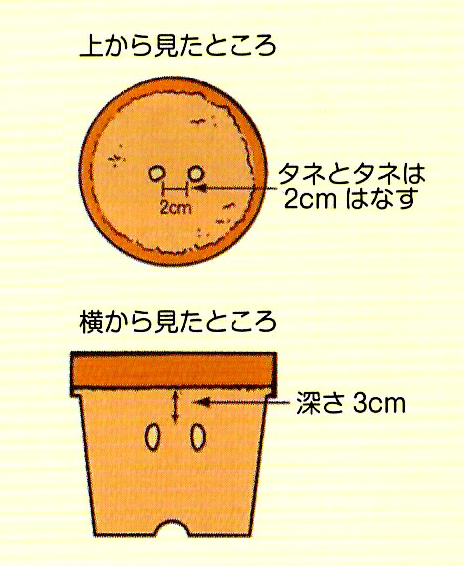
*Peanut seeds are sensitive to moisture. If the soil is moist, do not water.
④watering (plants)
Water thoroughly after sowing and lightly as the soil surface begins to dry out until germination. After germination, keep an eye on the soil to make sure it does not dry out completely.
The growth of peanuts

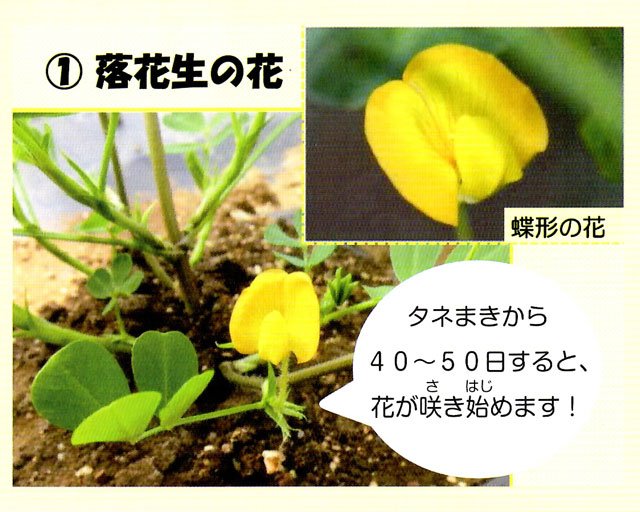
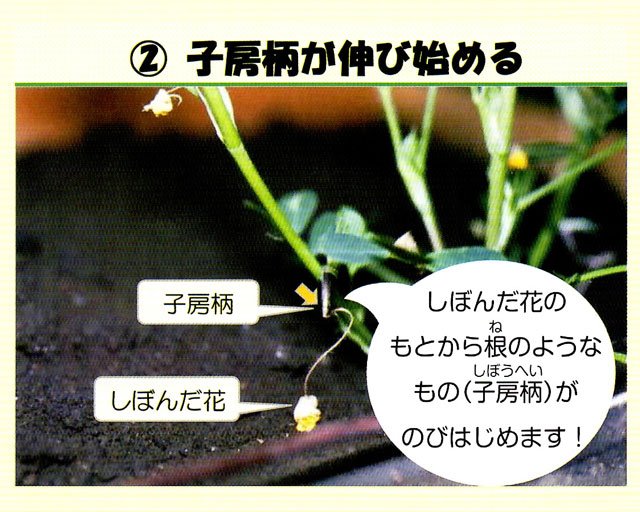
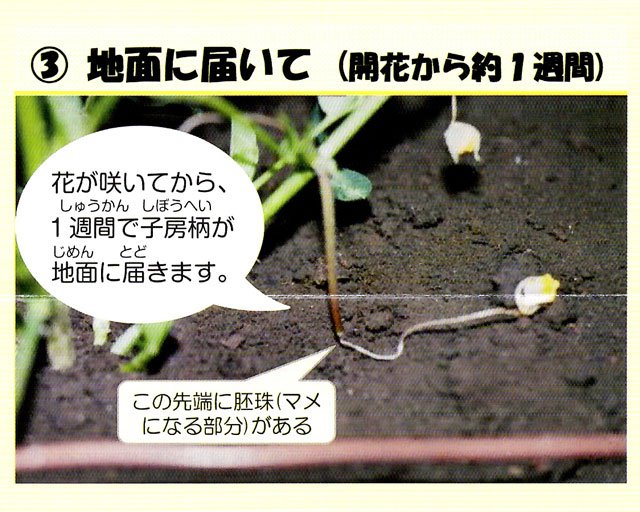
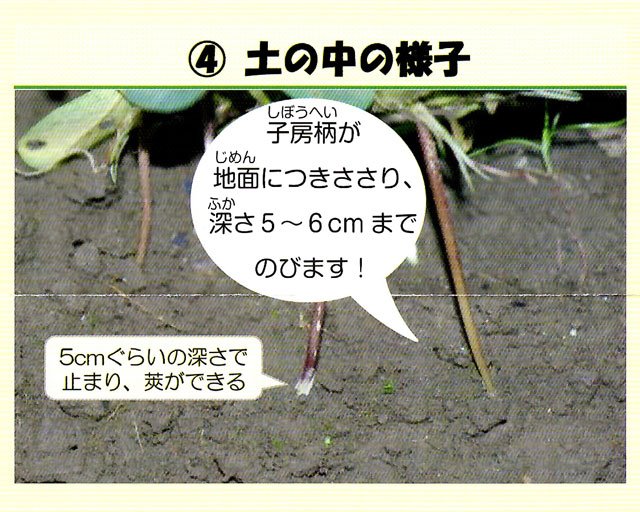
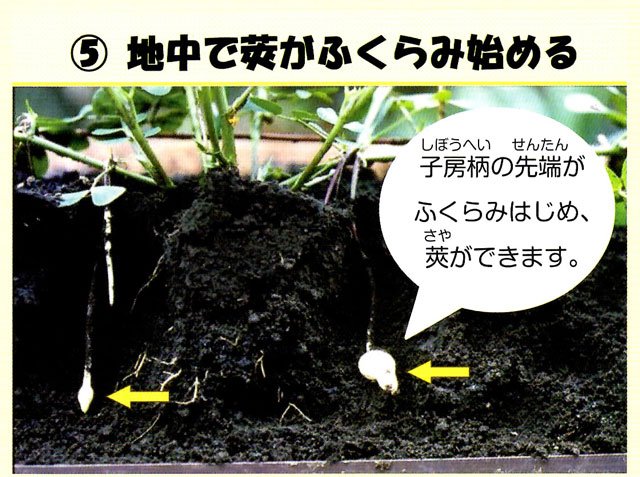
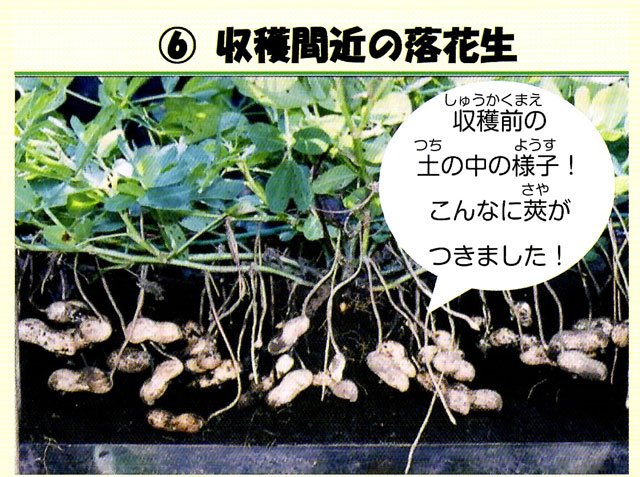
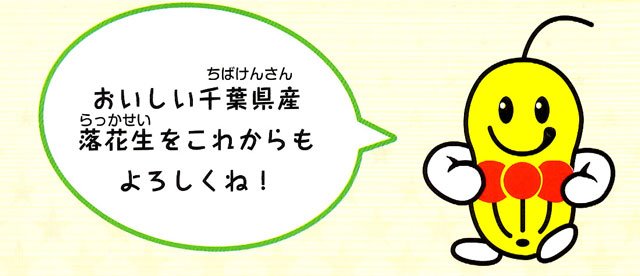
Print peanut cultivation manual

Frequently Asked Questions
We do not provide individual advice on cultivation. Please understand that we do not provide individual advice on cultivation.
Q. I cannot germinate. How can I increase the germination rate?
A. There are three possible causes of failure to germinate: damaged peanut seeds, insufficient soil temperature, and excessive watering. To avoid damaging the fruit, peel off the shells easily by hand and store them properly. Sow in late April to early May in western Japan, and in mid-May to early June in eastern Japan, at a soil temperature of around 20°C (68°F). After sowing, be careful not to water the seedlings too much and avoid sowing on days when rain is forecast.
Q. Should I soak the seeds in water for a day before planting?
A. Peanut seeds are sensitive to moisture, so do not put them in water.
Q. Should I thin out the plants after germination?
A. There is no need to thin out.
Related information on peanut cultivation
How to Store Peanut Seeds
Once thoroughly dried, they should be sealed and refrigerated to prevent exposure to air and moisture. The energy of germination will be retained, and the seeds can be used again the following year. When shelling peanuts, peel them carefully so as not to damage the fruit inside. For more information on storing peanuts, click here.
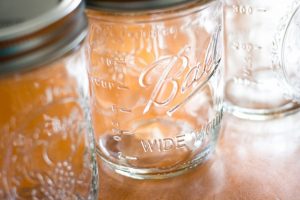
Growth Information
If you were in Chiba of Japan, Chiba Prefecture’s website provides information on growing peanuts and other crops. The information bulletin, which is issued based on this year’s weather conditions such as rainfall and sunshine hours, can be used as a reference for future cultivation policies. The magazine is published four times from July to November. It can be viewed here.
How to grow Omasari
The giant peanut, Omasari, has a slightly different growing method. You can check how to grow Oomasari on the Chiba Prefecture website here.
More detailed peanut cultivation guide (for farmers)
For a more detailed peanut cultivation guide, please click here.
Labor-saving drying operations (for farmers)
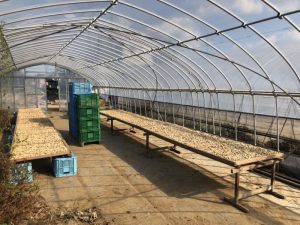
Purchase of peanuts (for farmers in Chiba, Japan)
